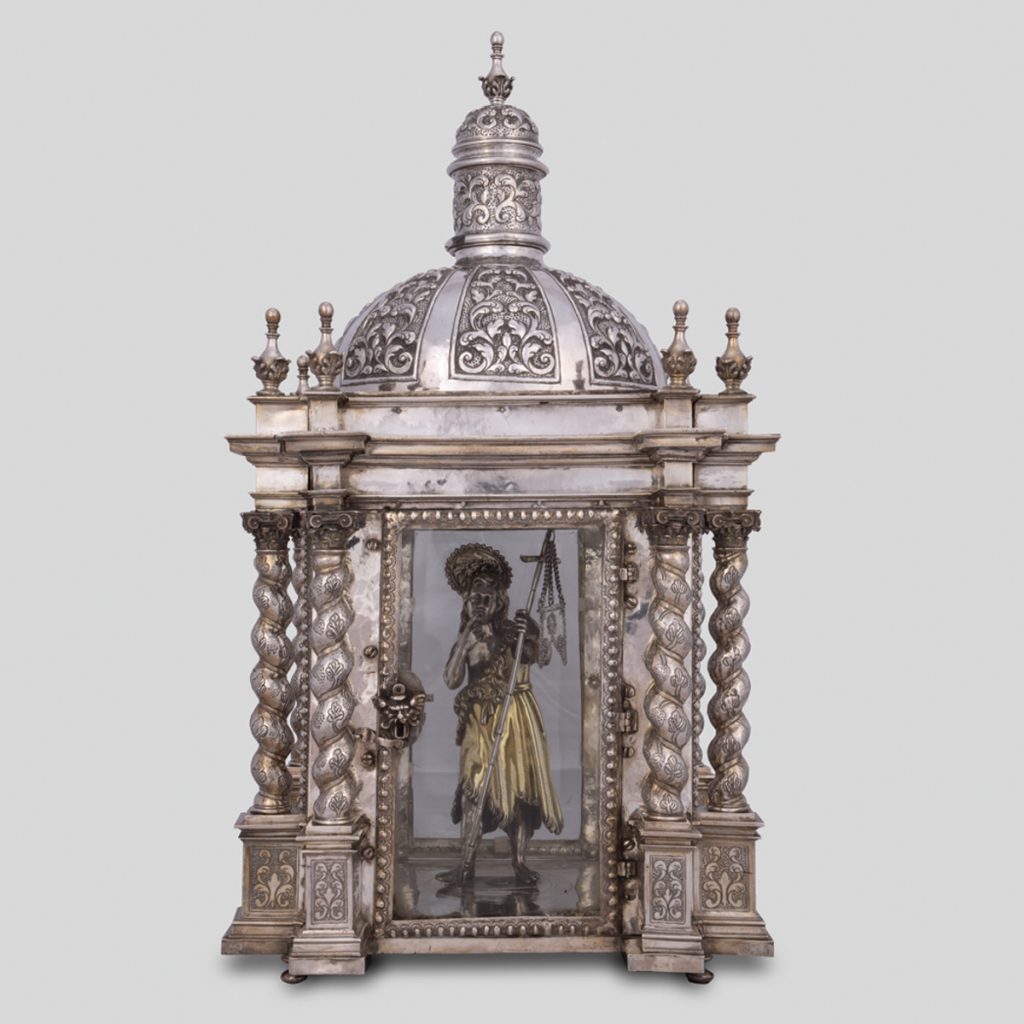Tabernacle representing the Basilica
Medieval Catholic-Roman worship presupposed a style of worship sustained by sumptuous decoration and an abundance of grand ceremonies. In Catholic the tradition, devotion to God could be demonstrated by displaying wealth and splendor, with ceremonies designed to impress making use of silver and gold items.
Medieval cults had highly ornamented silver items, often associated with brightly colored enamel. Rituals required decorated containers and garments, while images depicting religious scenes and icons (such as crosses) covered churches. In this historical context, few regular churchgoers were literate, so part of understanding a given message depended to a large extent on images and objects placed in public. The wealthiest churches would make use of innumerable containers, like chalices, made in silver. Churches with a lower income, however, would have to rely on less noble materials such as copper, brass and tin.
Although silver is used less regularly today, it remains an integral element of the religious ceremony. Silver goblets and communion cups are still an important part of the communion ritual, and silver is usually chosen to mark important events, birthdays and new beginnings. An excellent example of this is the practice – still popular – of giving a silver baptism cup to welcome a child into the family and community. Although in a gradually more secular context, there is still considerable interest in the ceremonial aspects of religion, as well as in its rich history.
Design and Iconography
As you would expect, there are certain symbols that can be seen repeatedly on various silver items of a religious nature. The cross (or Christ on the cross) is an obvious reference, often presented in communion cups to indicate its purpose and meaning. Other examples include doves, fishes and inscriptions with passages from the Bible. Metalwork and detailed ornamentation are thus the visual representation to manifest these important symbols of Christianity.
The Tabernacle consists of a small safe placed on the altar, being used to keep the pyx or the monstrance of the Eucharist. This piece can be located in its own chapel, the Chapel of the Most Holy.
Discover an example of this religious art in the J. Baptista’s collection: a Tabernacle representing the Basilica, with the image of Saint John the Baptist in it, executed in silver and gilt silver.



